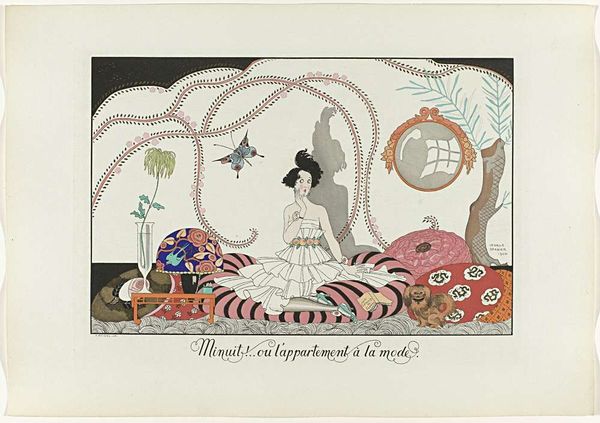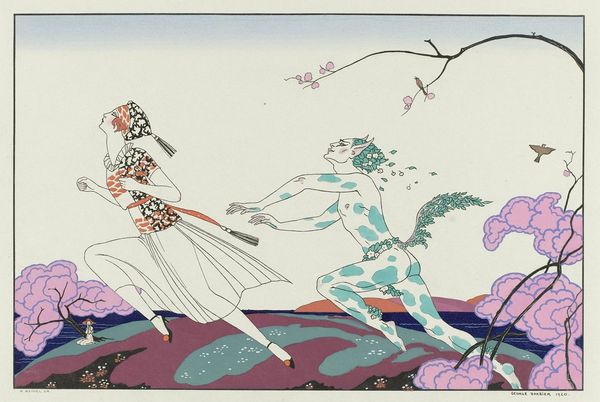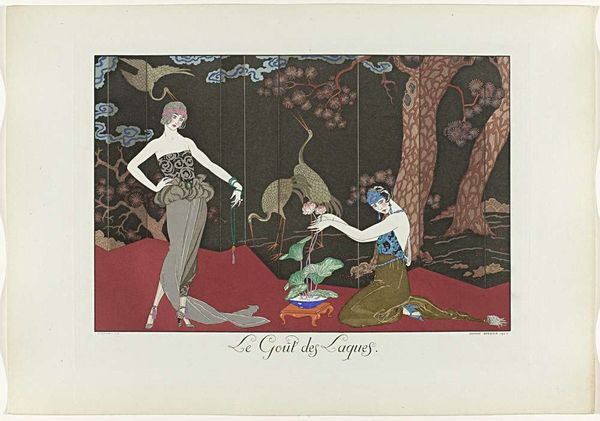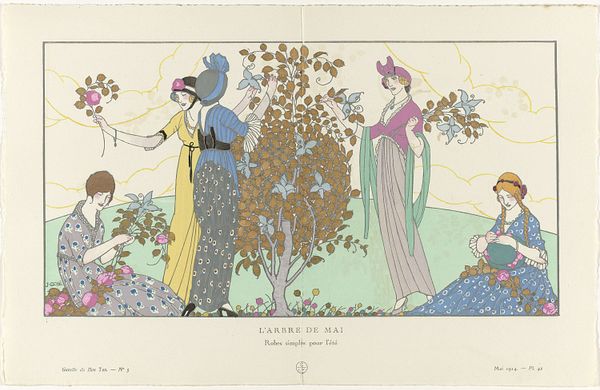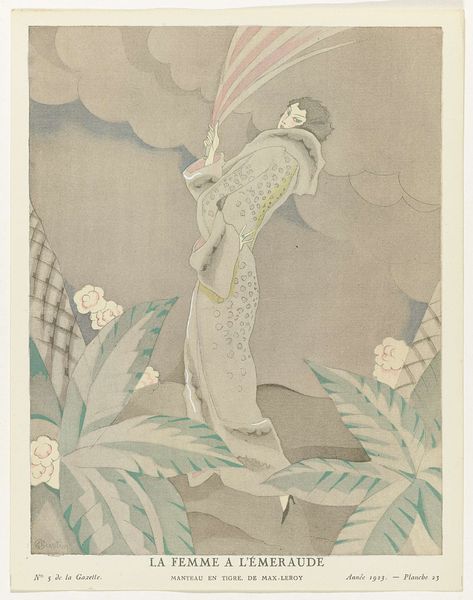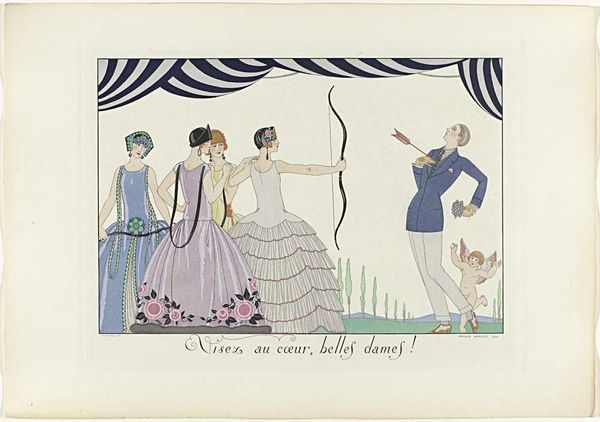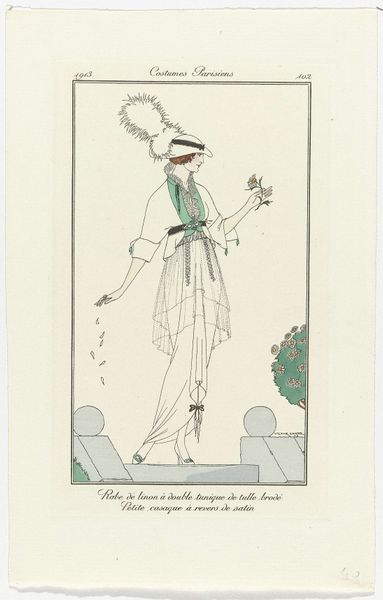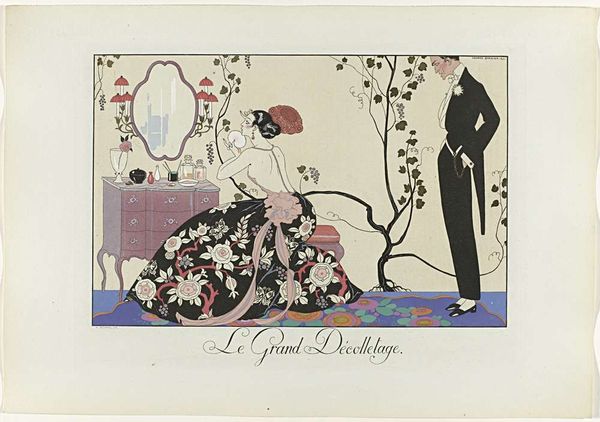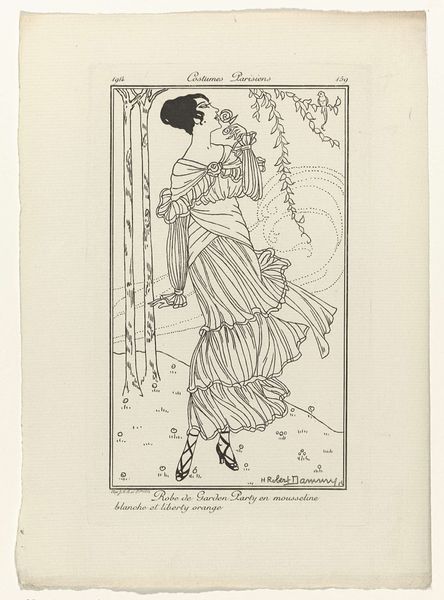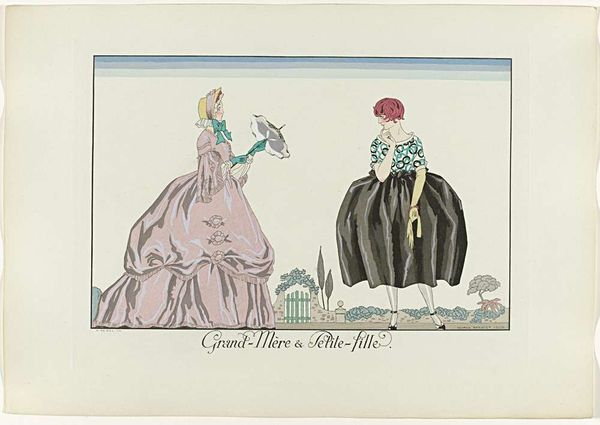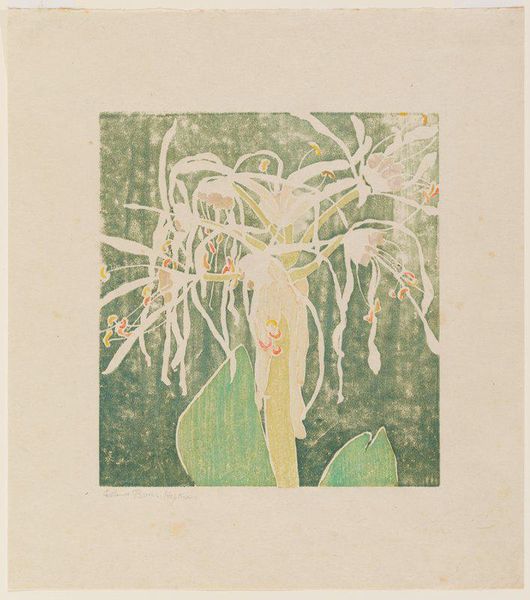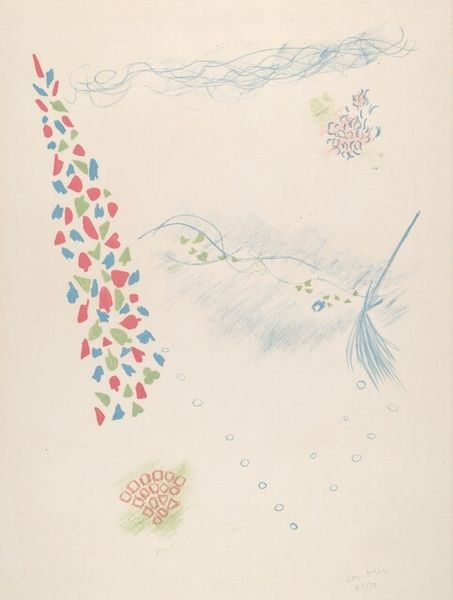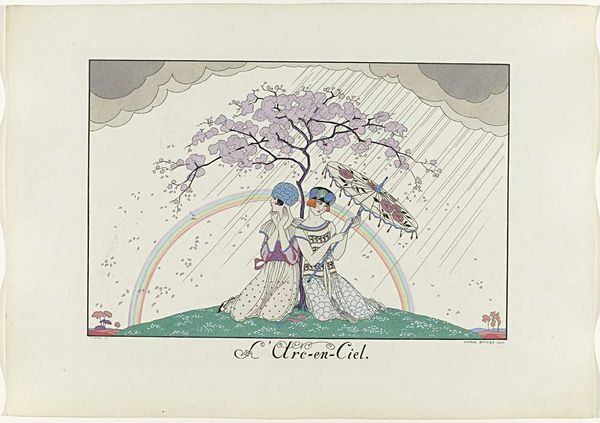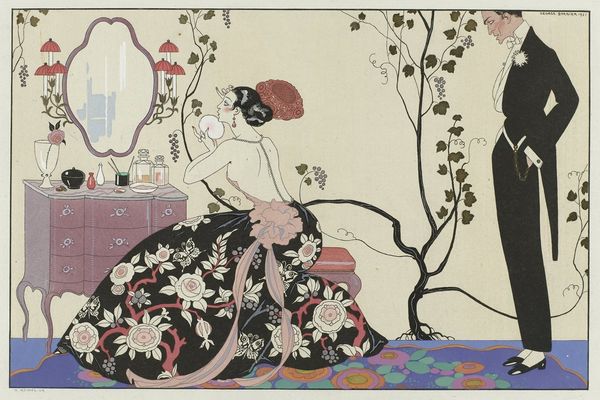
#
art-nouveau
# print
#
landscape
#
figuration
#
symbolism
#
erotic-art
Dimensions: height 310 mm, width 448 mm
Copyright: Rijks Museum: Open Domain
Editor: This is Henri Reidel's 1920 print, "Le Bonheur du Jour ou Les Graces à la Mode: L'Après-Midi d'un faune". It’s a fanciful scene, quite dreamlike and stylized. What do you see in this piece? Curator: I see echoes of ancient Arcadia reimagined through a modern lens. The faun, a creature steeped in classical mythology, is juxtaposed against a very contemporary, flapper-esque figure. What symbols resonate with you? Editor: The running figures definitely convey a sense of chase and freedom, and the natural elements feel almost decorative, rather than literal. Does this piece comment on the role of classical figures being translated for modern audiences? Curator: Precisely! Notice the color palette: soft pastels, quite fashionable for the 1920s. Reidel presents a deliberate tension between the timeless and the trendy. The faun, usually a symbol of untamed nature, is almost tamed himself with those stylized markings on his skin. Is he losing something of his primordial power? What's your take on the erotic nature of this artwork? Editor: That's an interesting point – perhaps it speaks to a longing for a lost, simpler existence even amidst modernity. I do find the faun's exposed body quite sensual. How does the pursuit aspect play into that symbolism? Curator: It speaks of desire, definitely, but also perhaps an unattainable yearning. The woman, representing modern allure, remains just out of reach. This is less a literal depiction of a mythological scene and more a commentary on the enduring power – and the changing interpretations – of symbols. What are your thoughts? Editor: It really shows how classical ideas continue to adapt and spark new conversations, especially through visual motifs. I also appreciate how much the art deco design aesthetic changed the meaning of classical symbolisms. Curator: Exactly. It reveals how each generation rewrites the myths, reimagining symbols to reflect their own desires and anxieties. Thank you!
Comments
No comments
Be the first to comment and join the conversation on the ultimate creative platform.
